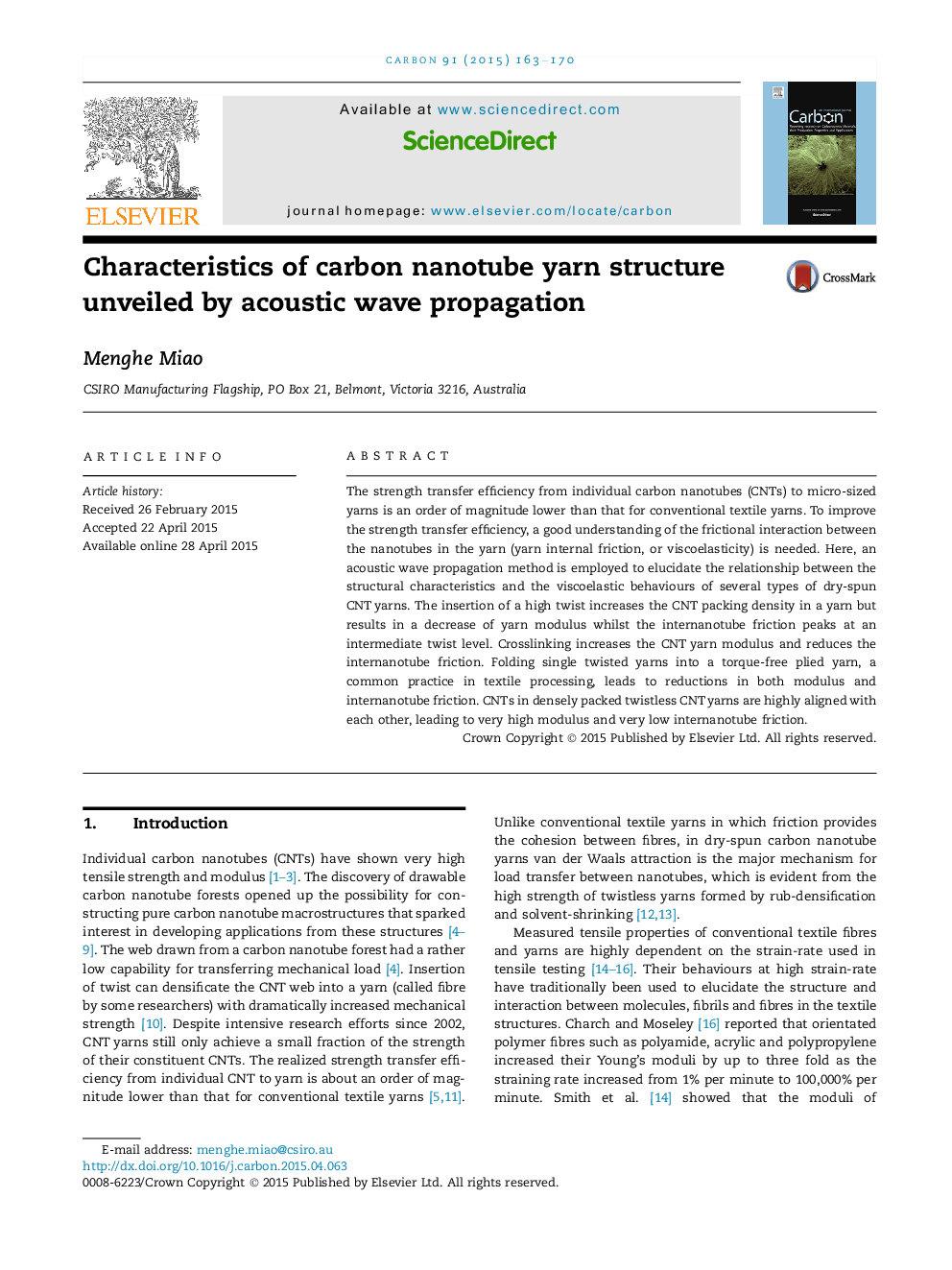| Article ID | Journal | Published Year | Pages | File Type |
|---|---|---|---|---|
| 7851665 | Carbon | 2015 | 8 Pages |
Abstract
The strength transfer efficiency from individual carbon nanotubes (CNTs) to micro-sized yarns is an order of magnitude lower than that for conventional textile yarns. To improve the strength transfer efficiency, a good understanding of the frictional interaction between the nanotubes in the yarn (yarn internal friction, or viscoelasticity) is needed. Here, an acoustic wave propagation method is employed to elucidate the relationship between the structural characteristics and the viscoelastic behaviours of several types of dry-spun CNT yarns. The insertion of a high twist increases the CNT packing density in a yarn but results in a decrease of yarn modulus whilst the internanotube friction peaks at an intermediate twist level. Crosslinking increases the CNT yarn modulus and reduces the internanotube friction. Folding single twisted yarns into a torque-free plied yarn, a common practice in textile processing, leads to reductions in both modulus and internanotube friction. CNTs in densely packed twistless CNT yarns are highly aligned with each other, leading to very high modulus and very low internanotube friction.
Related Topics
Physical Sciences and Engineering
Energy
Energy (General)
Authors
Menghe Miao,
